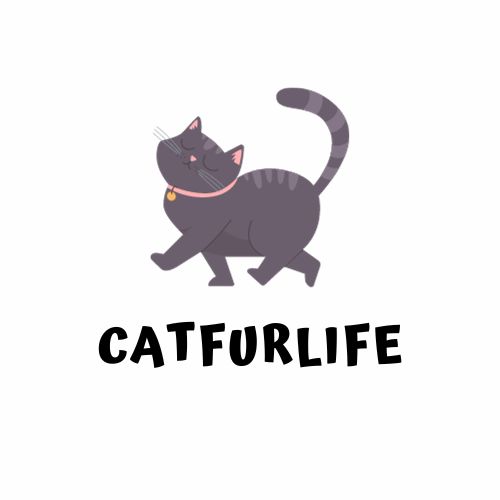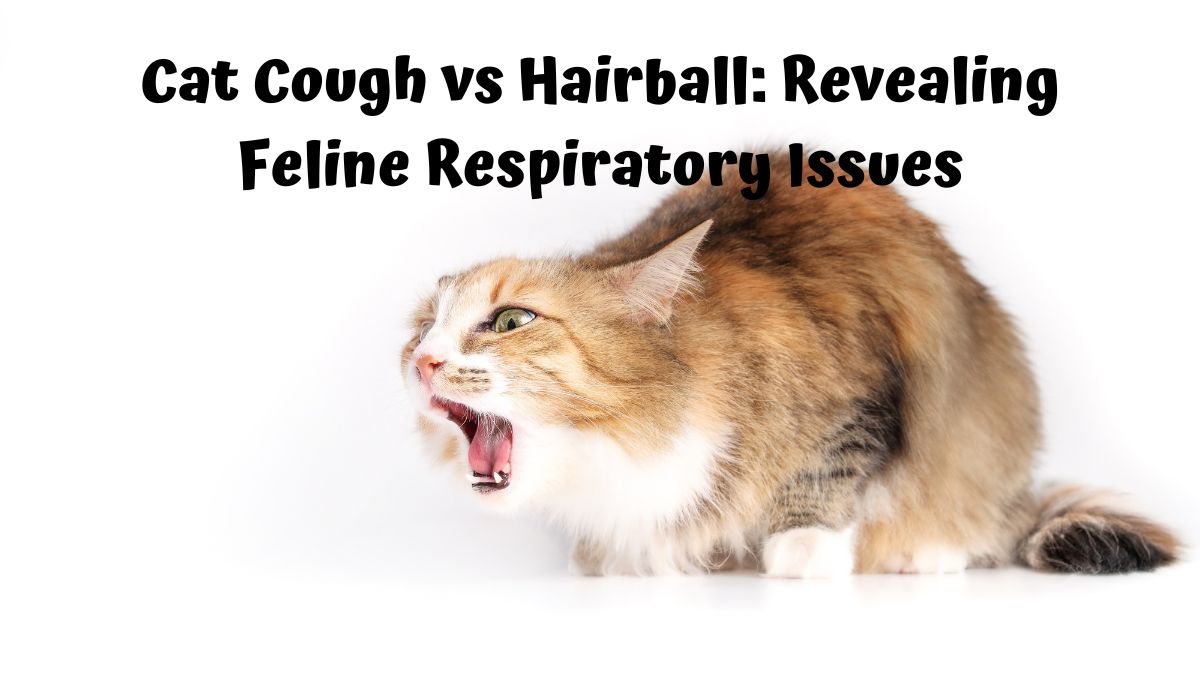Navigating the challenges of feline coughs and hairballs becomes effortless with this concise guide.
It equips cat owners with the knowledge to distinguish between coughing fits and the less alarming hairball episodes, shedding light on the health implications of each.
The article explores the myriad causes of a cat’s cough, from benign allergies to pressing respiratory ailments.
It lays out a roadmap for diagnosis and treatment, underscoring the critical role of professional veterinary care.
It also provides practical tips for hairball prevention, focusing on dietary management, regular grooming, and digestive wellness.
Concluding with crucial advice on when to seek urgent veterinary help, this guide is an invaluable ally for cat owners dedicated to maintaining the health and happiness of their feline companions.
Cat Cough & Hairball Symptoms
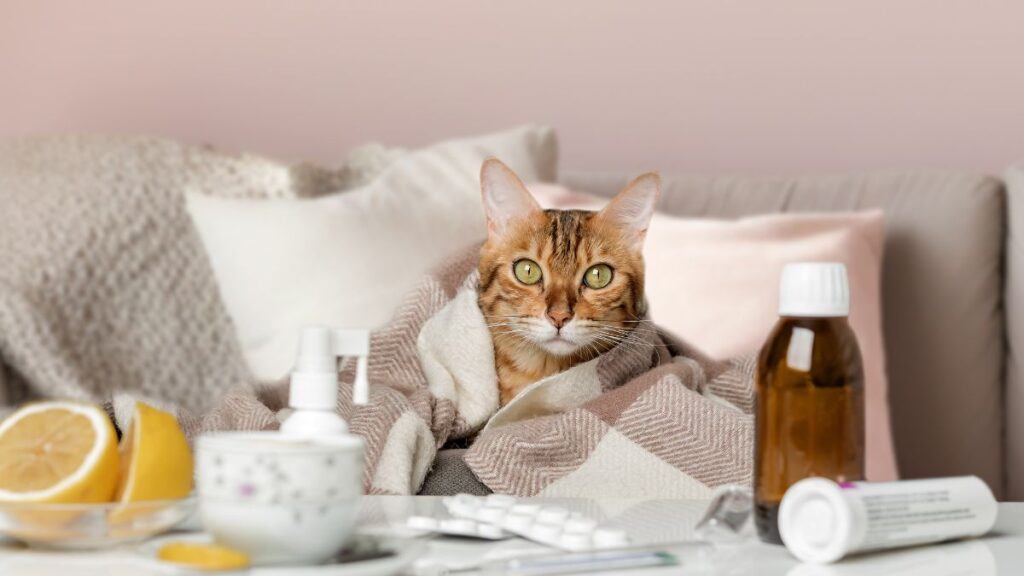
Cats often exhibit symptoms that may worry owners, such as coughing or expelling hairballs.
Recognizing these signs is crucial to ensure proper care and determine if veterinary attention is necessary.
Identifying Hairball Signs
Cats groom themselves by licking their fur, which can lead to the ingestion of loose hairs.
These hairs can accumulate in the stomach and form hairballs. Symptoms indicating the presence of hairballs include:
- Gagging or retching: A cat might make repeated hacking noises, followed by the expulsion of a hairball.
- Vomiting: After several attempts, a cat may vomit a cylindrical mass of fur.
Cats with frequent hairballs might show signs of intestinal blockage, such as difficulty breathing, persistent coughing, or changes in bowel movements.
Recognizing Cough Indications
A cat’s coughing can signal several health issues, ranging from mild to severe. Types of coughs include:
- Dry cough: A harsh, dry cough can indicate irritation or inflammation in the airway.
- Wet cough: A cough that sounds moist may suggest an accumulation of fluid in the lungs.
Immediate veterinary care is advised if a cat exhibits a persistent or occasional cough alongside other distress signs like labored breathing.
Differentiating Between Cough and Hairball
When differentiating between a cough and an attempt to dislodge a hairball, observe the following:
- Duration: Coughing fits are usually brief, while attempts to expel hairballs may last longer.
- Posture: A cat coughing typically extends its neck and crouches low to the ground, while it might sit with a hunched back when dealing with a hairball.
- Product: Coughing rarely produces a hairball, but if it does, it may be accompanied by a small amount of fluid or food.
Identifying whether a cat is coughing or expelling a hairball is vital for proper treatment and deciding when to seek veterinary care.
Common Causes of Coughing in Cats
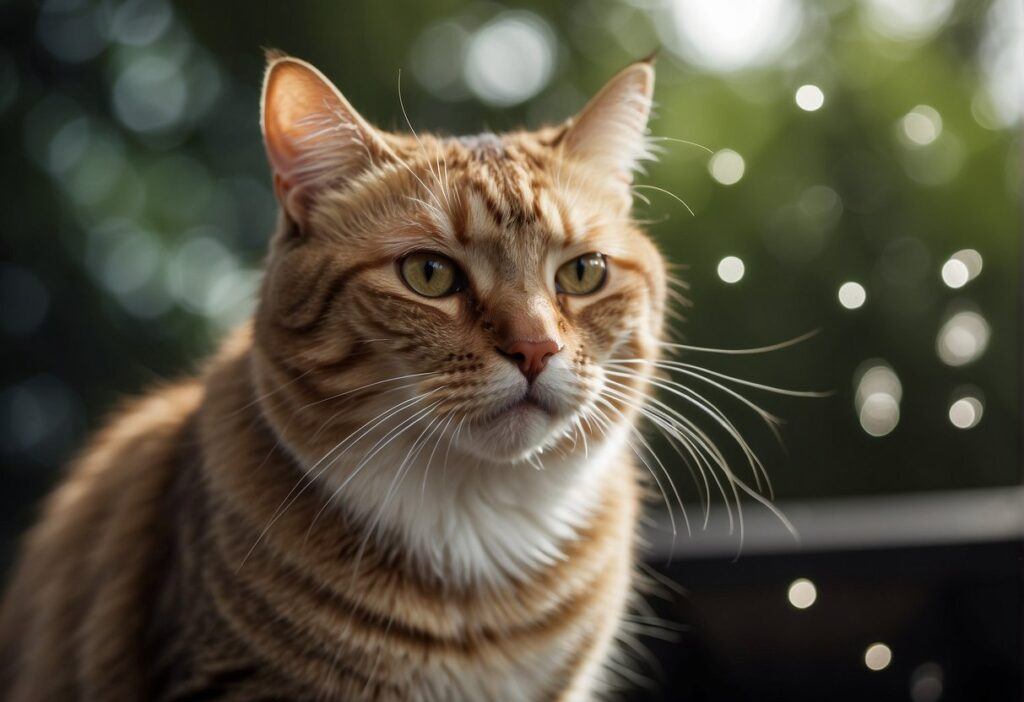
Coughing in cats can be symptomatic of various underlying health concerns, ranging from mild irritations to serious conditions. Identifying the cause is crucial for proper treatment.
Respiratory Conditions
Respiratory infections, whether of viral or bacterial nature, are the primary causes of coughing in cats.
Viral infections such as feline herpesvirus, calicivirus and bacterial infections like Bordetella can inflame the respiratory tract, leading to cough.
Allergies and Asthma
Cats can suffer from allergies that trigger respiratory symptoms, including coughing.
Cat asthma, a chronic inflammatory lung disease, can cause severe coughing episodes known as feline asthma attacks, which are often responsive to environmental triggers.
Heart and Lung Disease
Heart disease in cats, such as cardiomyopathies, can lead to cough due to secondary lung complications.
Feline heartworm disease, caused by parasitic worms, is another serious condition that can produce coughing due to lung damage.
Foreign Bodies and Infections
Cats might inhale or ingest foreign material, leading to an obstruction or irritation in the throat or airways, prompting cough.
Infectious agents like parasites, bacteria, or fungi can cause coughing if they infect the respiratory system.
Diagnosis and Treatment
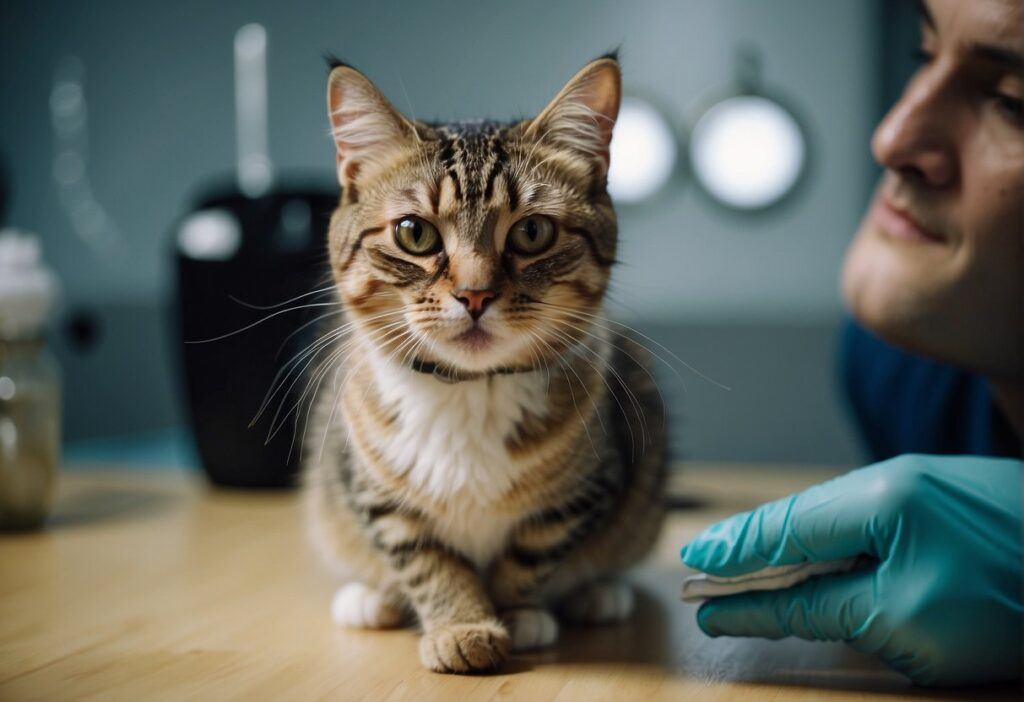
An accurate diagnosis is crucial when differentiating between coughing due to a respiratory condition and the expulsion of a hairball.
Appropriate treatment can then be administered to maintain the cat’s health and well-being.
Veterinary Diagnostic Methods
Veterinarians typically start with a thorough physical examination, complemented by reviewing the cat’s medical history. Essential diagnostic tests include:
- Blood tests: To screen for infections or systemic issues.
- X-rays or ultrasounds: To detect any abnormalities in the chest or abdomen.
- Endoscopy: For a direct look at the respiratory tract when necessary.
This process helps determine if immediate medical attention or emergency care is required.
Treatment Options and Management
Once the cause of the cough or retching is identified, the following treatment options may be suggested:
- Medication: Includes antibiotics for infections or other drugs to address underlying respiratory conditions.
- Surgery: In rare cases, to remove obstructions or masses.
- Dietary changes: To reduce hairball formation for cats with frequent issues.
Treatment plans are tailored to each cat’s needs and may require ongoing veterinary care.
Home Care and Prevention
Owners can assist in managing their cat’s health with:
- Regular grooming: Helps minimize ingested fur.
- Hairball Remedies: Special diets or products to help the hair pass through the digestive system.
- Environmental Management: Reducing stress and allergens at home to prevent respiratory issues.
Early recognition of symptoms and prompt veterinary consultation can prevent the escalation of cough-related problems and hairball complications.
Cat Hairball Prevention and Management
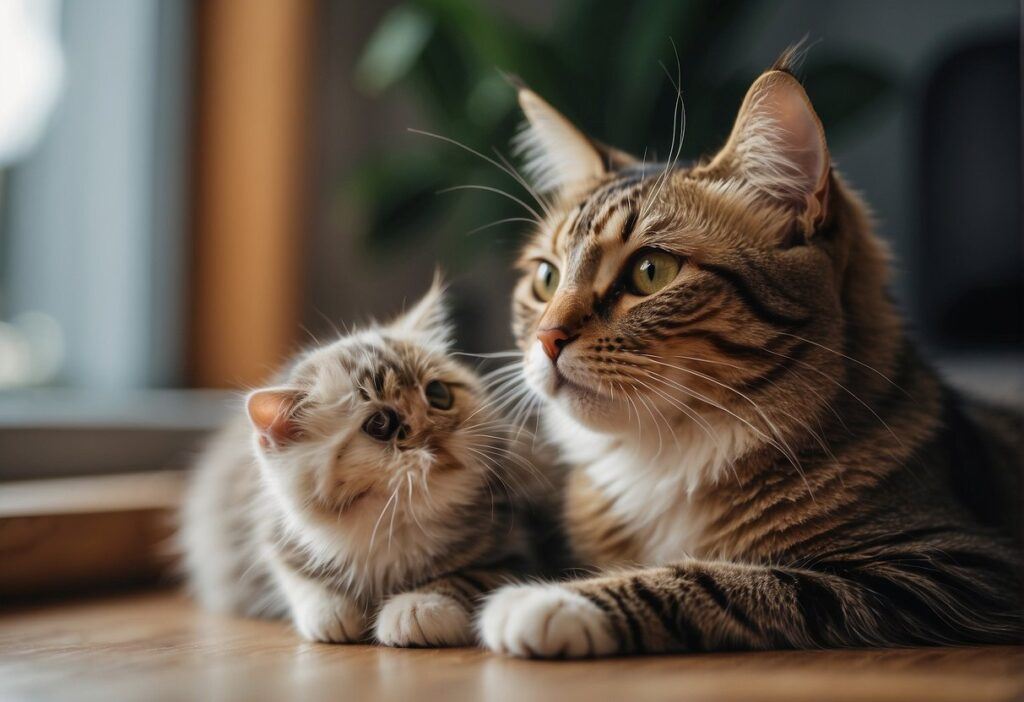
Managing hairballs in cats is centered around proper dietary habits, regular grooming, and maintaining digestive health.
These steps can reduce the occurrence of hairballs and improve your cat’s overall well-being.
Dietary Considerations and Hairball Formulas
Cats likely to develop hairballs can benefit from specially formulated cat food. These hairball control diets are high in fiber, which aids in moving hair through the digestive tract.
- High Fiber Diets: Fiber helps to push hair through the gastrointestinal tract.
- Commercial Hairball Diets: These cat foods incorporate specific ingredients to prevent hair from clumping.
Grooming and Hair Care
Regular brushing is critical for removing loose hair and reducing the amount cats ingest during self-grooming.
- Brushing Frequency: Daily for long-haired cats, weekly for short-haired cats.
- Professional Grooming: Considered for cats with a lot of fur to reduce hair ingestion.
Understanding Digestive Health
A cat’s digestive system can usually handle an occasional hairball. Still, frequent hairballs can signal underlying issues with their gastrointestinal tract.
- Digestive Aids: Laxatives or lubricants can sometimes help pass hair through the digestive tract.
- Regular Vet Check-ups: Essential to ensure a healthy digestive system.
Related: How to Tell If Your Cat Is Pregnant or Has Worms: Expert Signs and Symptoms
When to Seek Immediate Veterinary Attention
Cats often cough or expel hairballs without it being an emergency.
However, specific symptoms indicate a need for immediate veterinary care to address severe cases or serious conditions.
Recognizing these symptoms promptly can be critical for your cat’s health.
Signs of Severe Complications
- Loss of Appetite: A cat refusing to eat for more than 24 hours is concerning, especially if accompanied by coughing.
- Lethargy: An unusually inactive cat showing disinterest in its surroundings may indicate a deeper issue.
- Persistent Coughing: Coughing that lasts over a day without producing a hairball can suggest a respiratory issue or other serious condition.
Emergency Symptoms
- Open-Mouth Breathing: This signs severe distress and warrants immediate attention.
- Blue or Pale Gums: Indicative of inadequate oxygen flow or a medical emergency.
- Unexplained Agitation or Pain: If the cat shows signs of distress or discomfort, it may be experiencing a deeper health issue.
Supportive Emergency Measures
- Stay Calm: Your calmness can prevent further stress on the cat.
- Safe Transportation: Ensure your cat is securely and comfortably placed in a carrier for transport to the emergency vet.
Introducing Cory Haasnoot, a devoted father, loving husband, and enthusiastic cat lover. As a key content creator for CatFurLife.com, Cory blends his family values and passion for felines into engaging and informative content. He brings a unique perspective to the site, sharing cat care tips and how cats can enrich family life and bring joy to households.
